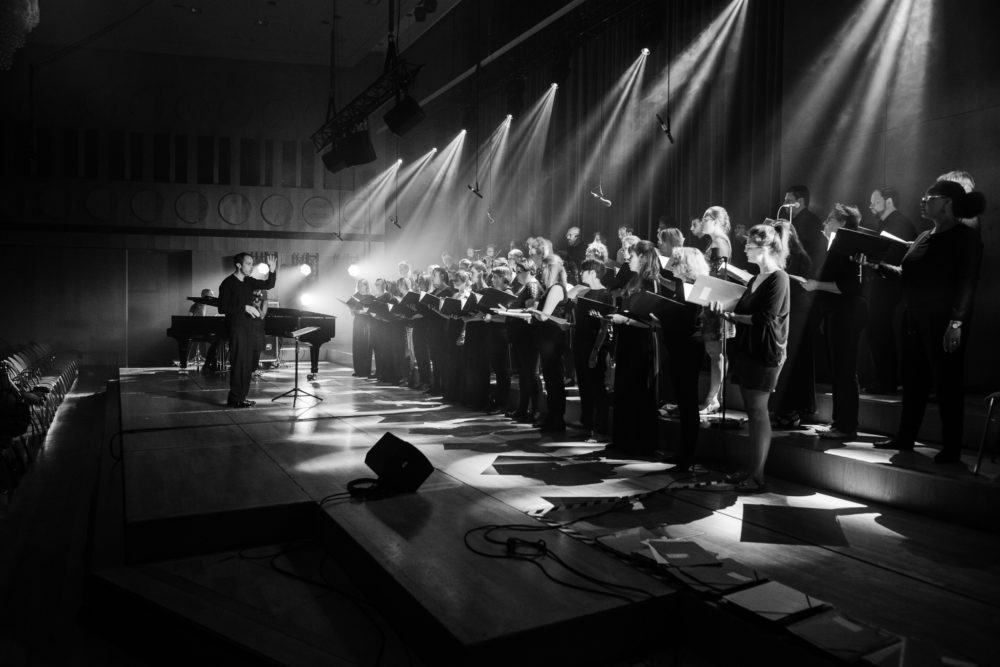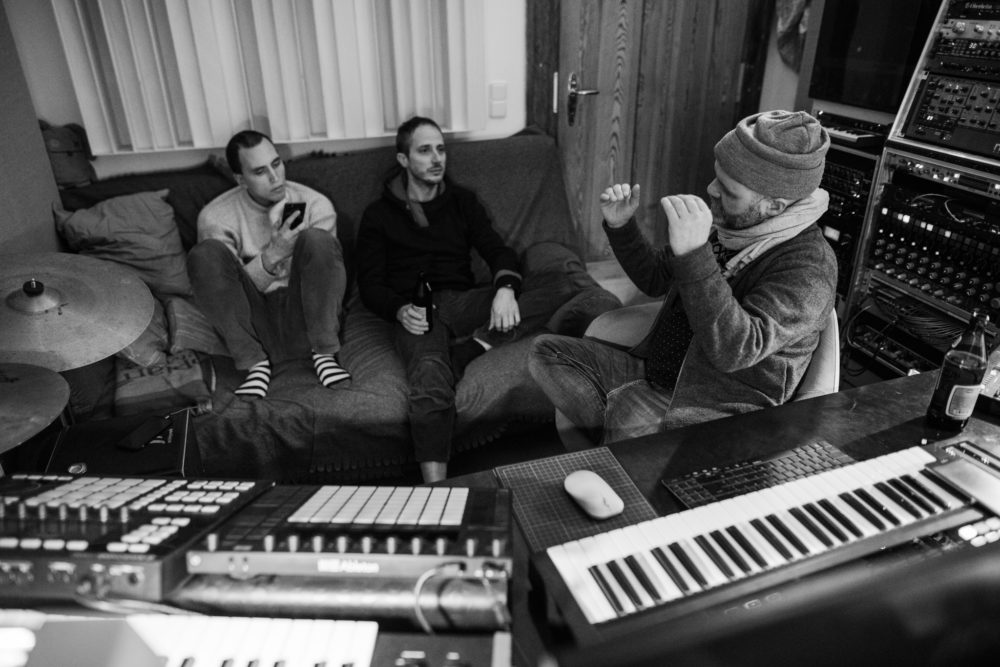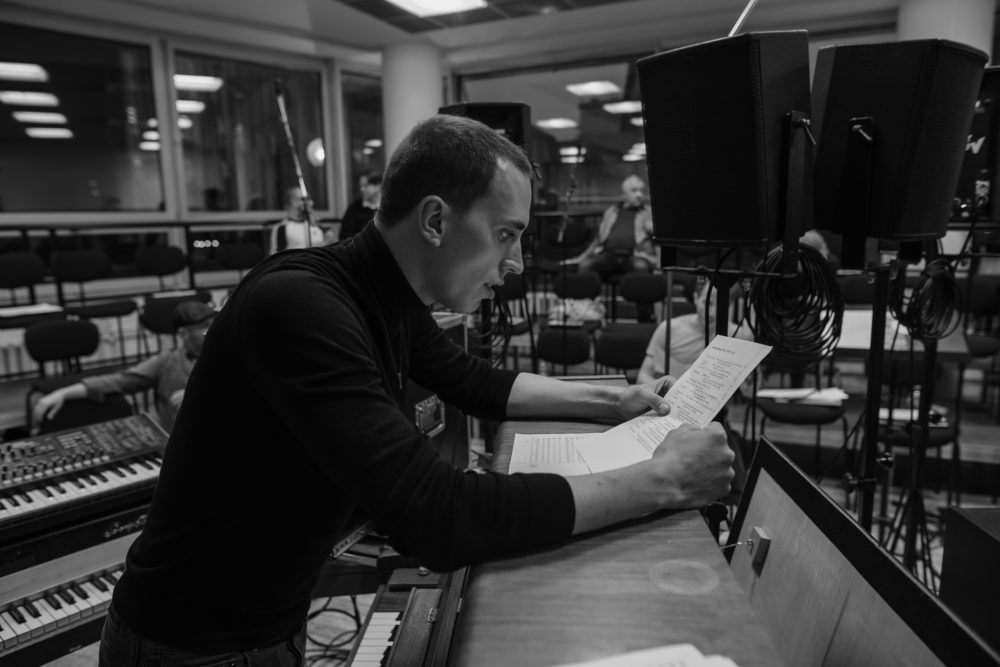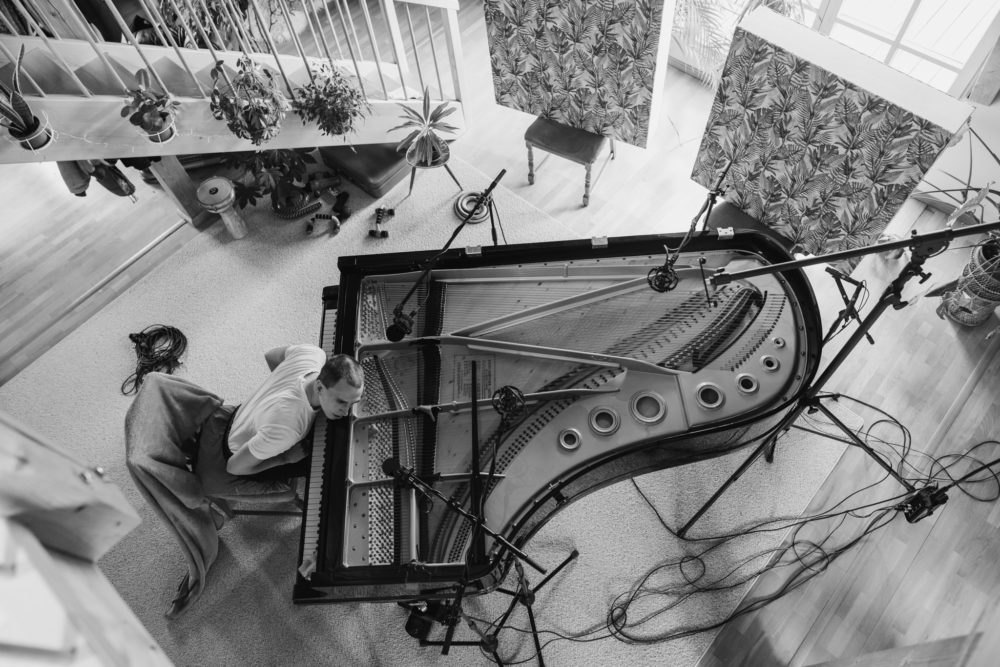German producer Marlow’s recordings and remixes are released on labels like Moon Harbour, Room With A View, !K7, Sonar Kollektiv, Z Records or Compost. His music has taken him on tours worldwide and his last releases landed him an invitation by Gilles Peterson to do a guestmix for his Worldwide Show on BBC. This month, Marlow releases a rework of German experimental pianist and longtime collaborator, Martin Kohlstedt’s track ‘AMSOMB’.
“Marlow threw some memorable parties during my university years and succeeded in breathing life and humanity back into the stomping, cold and hazy electronic soup that was prevalent a mere ten years ago. Hip hop, trip hop, jazz, funk, soul and disco streamed out of this man, who was part of the heyday of electronic music in Leipzig during the ’90s, unhindered… On top of it all, he was my lecturer at Bauhaus University and introduced me to the art of mixing and producing”, says Kohlstedt of Marlow.
You can listen to Marlow’s Re-Mood of Martin Kohlstedt’s ‘AMSOMB’ on Spotify and Youtube.
Marlow offers us his top production tips, which came in very handy when working with Martin Kohlstedt’s material which included, amongst many other soundscapes, recordings of a choir.
1. Think big, think different and be creative in finding solutions

We had the chance to work with the Leipzig Gewandhaus Choir for Martin’s album ‘Ströme’. Martin and I actually work very differently but we do have one thing in common; try it out, record it, edit it and create something new from it. With a more structured construct like a classical choir, this type of artistic process is not common. When recording for the album ‘Ströme’ we decided to record the choir arrangements individually, divided into vocal groups. We did this for two reasons; on the one hand, because it was the only way for us to make such a large project possible, on the other because it’s very helpful for our way of working and the way we come up with ideas. A huge organizational and financial effort has been extremely minimized and at the same time it has opened up production possibilities for us that a classical choir recording cannot offer.
2. Take your time but don’t lose the focus

With a total of over 100 developed stems, we were able to handle the recorded material very unconventionally and creatively for the original ‘AMSOMB’, and also for my rework of it, looping individual vocal groups regardless of the overall sound or giving them extreme reverb flags. Of course, it’s a lot more work to make all the voices sound like a compact unit again in the end, but the possibilities for dealing with the material are incredibly versatile. Here, it is important not to lose yourself in the abundance of possibilities and to keep a clear goal in mind.
3. Listen carefully to everything, realize what you hear and change the context

In many recordings, if you listen carefully, there is so much more than just what they were made for. There are so many interesting sounds and ideas beyond the actual recordings. I have learned over the years to hear “out of the box” when listening to finished tracks or raw recordings. What else is there in what you hear? What sounds, rhythms, or fragments are there that may not be as obvious? There are interesting snippets almost everywhere that can be taken out of context and reprocessed. This is, of course, not a new discovery. Representatives of the “Musique concrète” experimented with such ideas as early as the 1940s, but it is a lot of fun to find sounds, to take them out of context, to alienate them, and then to create something new. If you approach the recordings unconventionally beforehand especially, you can discover so many interesting things by listening carefully.
4. It‘s good to know what sound is and how it works

Knowing what sound actually is, how sound works, and how it doesn’t, is a big step in understanding what mixing and thus “shaping sound” actually is, and how it works. Regardless of whether I mix a solo piano album or produce my own tracks with 80 or more stems, basic knowledge of sound is essential. Why does something sound the way it does, and why does it not work with other sounds? Why does my production sound “thin” and “low-pressured” or immediately queasy and undefined as soon as I change something? Why can’t I get that perfect kick, even though I can tell that something isn’t quite right as it is? Often it is small things like tuning the kick drum to the track or avoiding auditory masking or comb filter effects that can quickly lead to the goal. There are a lot of things that you can take into account before the recording if you prepare it well you won’t have to fix it in the mix. Also learning to hear mistakes, to analyze and classify them, and finally to be able to fix them is based on knowing what a sound is and how sounds work.
5. Hardware vs. Software vs. Hardware
 Up until 20 years ago, it was practically essential to have a studio full of hardware in order to experiment and to make fat mixes, but this has now drastically changed. We can have an SSL Studio with a Moog Modular System, 2 Fairchild compressors, and 4 Chandler Mastering EQs on the laptop if we want to. I find the developments in the field of modular synthesizers much more exciting than exploring digital possibilities of cloning analog hardware or producing inexpensive replicas of analog classics. Of course, there is also the hype of “vintage sounding analog modules,” but many very small companies are bringing innovative, and above all intuitive, modules onto the market that offer new, playful and experimental access to music. And here we come to chance and experimentation, away from exact reproducibility, towards the intuitive, auditory handling of newly conceived concepts. For my rework, for example, I experimented with an exciting sampler module, sampled phrases, tried them out, and simply recorded what happened. The many individual stems of the choir were a great starting point for my rework. A lot of the small set pieces in the rework were created by chance and were then merged and processed in my DAW.
Up until 20 years ago, it was practically essential to have a studio full of hardware in order to experiment and to make fat mixes, but this has now drastically changed. We can have an SSL Studio with a Moog Modular System, 2 Fairchild compressors, and 4 Chandler Mastering EQs on the laptop if we want to. I find the developments in the field of modular synthesizers much more exciting than exploring digital possibilities of cloning analog hardware or producing inexpensive replicas of analog classics. Of course, there is also the hype of “vintage sounding analog modules,” but many very small companies are bringing innovative, and above all intuitive, modules onto the market that offer new, playful and experimental access to music. And here we come to chance and experimentation, away from exact reproducibility, towards the intuitive, auditory handling of newly conceived concepts. For my rework, for example, I experimented with an exciting sampler module, sampled phrases, tried them out, and simply recorded what happened. The many individual stems of the choir were a great starting point for my rework. A lot of the small set pieces in the rework were created by chance and were then merged and processed in my DAW.
Follow Marlow: Facebook | Soundcloud








